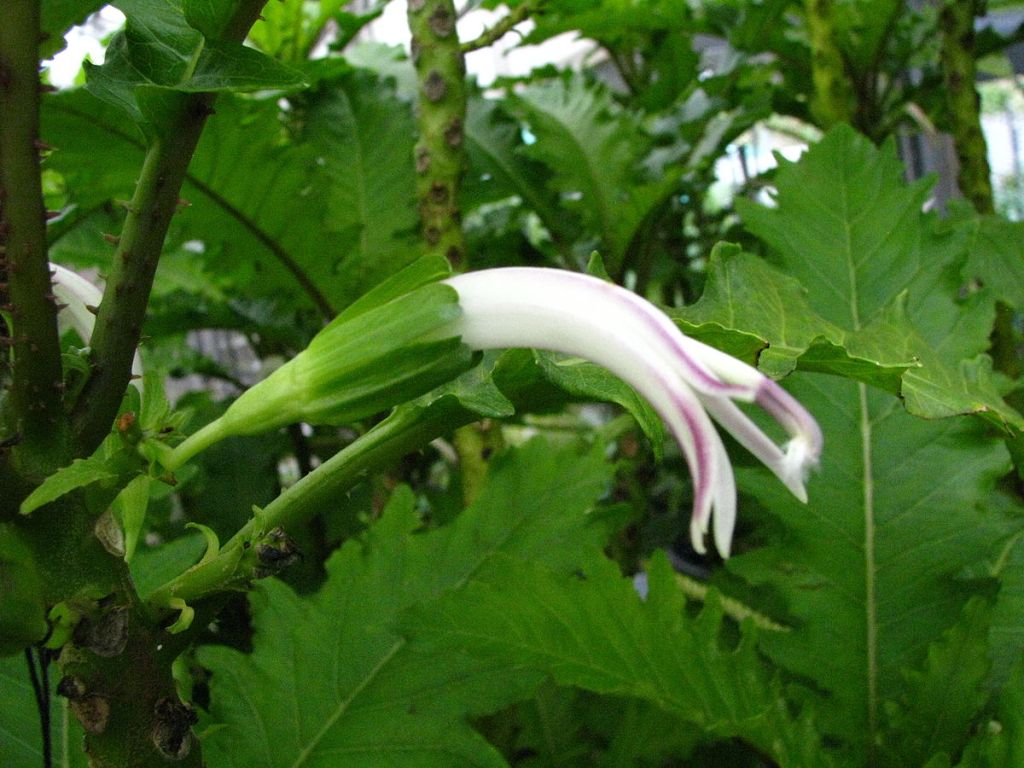
Here is a tale of drones for good, wrapped inside a wider effort to protect and preserve some of the world’s most endangered plants. Over the summer, botanist and drone pilot Ben Nyberg flew his craft while surveying flora in otherwise inaccessible locations on Kaua‘i, and discovered a species thought to have been wiped out apart from a single spot far across the island. Now he’s looking to expand use of drones from not only discovering the hidden survivors of threatened plants like those, but also in harvesting their seeds to ensure they’ll never die off.
Nyberg is the geographic information systems and drone project coordinator for the nonprofit National Tropical Botanical Garden (NTBG) organization, which began using the craft on Kaua‘i in 2016. The move to observe the island’s plant life from the skies was logical amid the difficulties – and considerable dangers – that accessing the island’s often steep, slippery, or entirely vertical rises and cliffs present to researchers approaching on foot or dangling down from ropes. Indeed, many features that make Kaua‘i so gorgeous also make getting close to that beauty impossible (or require or a borderline death wish). In order to surmount those hindrances, Nyberg sent a drone aloft – and suddenly miles of isolated, inhospitable terrain opened up for inspection.
“(We) quickly found that drones were a powerful and effective tool for botanical survey,” Nyberg tells DroneDJ. “This is especially highlighted in cliff areas that have never been surveyed. The drone provides a safe and highly efficient alternative to rappelling these areas on ropes.”
It was while piloting his Phantom 4 Pro drone that way in June that Nyberg and his NTBG colleagues spotted 95 gingerleaf cyanea plants (known locally as “ha ha”) growing in remote locations on Kaua’i’s northern side. Previously, the only remaining specimens of the flowering shrub had been limited to an area at the headwaters of the Wailua River, toward the center of the island. Similar flights this summer turned up other survivors of endangered species that had never been seen before. That followed the NTGB’s aerial coup three years back of discovering specimen of the native Hibiscadelphus woodii plant, thought to have been extinct, in a remote part of the famous but formidable Nā Pali Coast.

Botanical drone surveys on Kaua’i part of a wider effort to preserve endangered indigenous plants across Hawai’i
Why is tracking down rare or presumedly defunct botanical species on Kaua‘i such an arduously earned big deal? As Nyberg explains, it’s the oldest of the Hawaiian high-islands, and has been considerably eroded by its (in)famous abundant rainfall over centuries – hence its spectacular valleys and dizzying cliffs. The same unapproachable geography that keeps researchers (not to mention tourists) at bay also confound feral goats and other threats from getting to vulnerable flora. As a result, Nyberg notes, “There is an amazing amount of biodiversity and endemism in these cliff habitats… (and) in some cases, a single cliff holds the entire known population of a species.”
At the same time, the rich and diverse plant life that Kaua‘i and the wider archipelago play home to is under constant threat. Nearly 90% of native Hawaiian plants don’t grow anywhere else on Earth, yet invasive species, environmental changes, and human destruction has left a large number of that flora at risk of extinction. Though the islands only make up 1% of the US landmass, they harbor nearly half of all endangered plants in the country. Fully 27 indigenous Hawaiian species are thought to have died out in the past 20 years alone.
That is why taking a full census of plant life is important to managing their protection – and preventing any more from vanishing. That objective is now getting closer to hand on Kaua‘i with Nyberg supplementing his partners’ searches on foot rope rappels with flights of DJI Mavics and Phantom 3s.
“Our current drone is a Phantom 4 Pro,” he says. “I like the stability, camera sensor, and catching legs, while still being portable enough to hike through the forest.”
Nyberg’s botanical surveying and protection work isn’t ending with cliff flights and making formerly unobtainable visual identification of flora, however. In October, he’ll participate in testing a customized version of the DeLeaves drone-transported tree-cutting mechanism, which has been adapted to collect seeds from endangered plants on cliffs. The goal: to store those precious seeds as a hedge against them ever going extinct.
Awaiting those trial flights next month, Nyberg and his fellow NTGB members got a shout-out this week from Hawai‘i governor David Ige, who plugged the October 2 broadcast of the documentary Cliff Dwellers of Kaua‘i…and the People who Hang with Them exploring their conservationist efforts. For readers without access to Hawaiian channels, the video will also be available after initial airing here, while Nyberg’s recent and ongoing work can be followed through his Twitter account.
Photo: National Tropical Botanical Garden
FTC: We use income earning auto affiliate links. More.




Comments